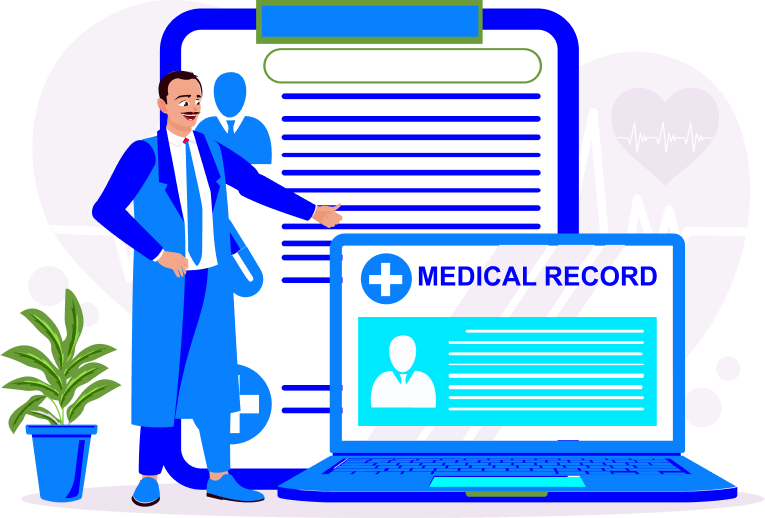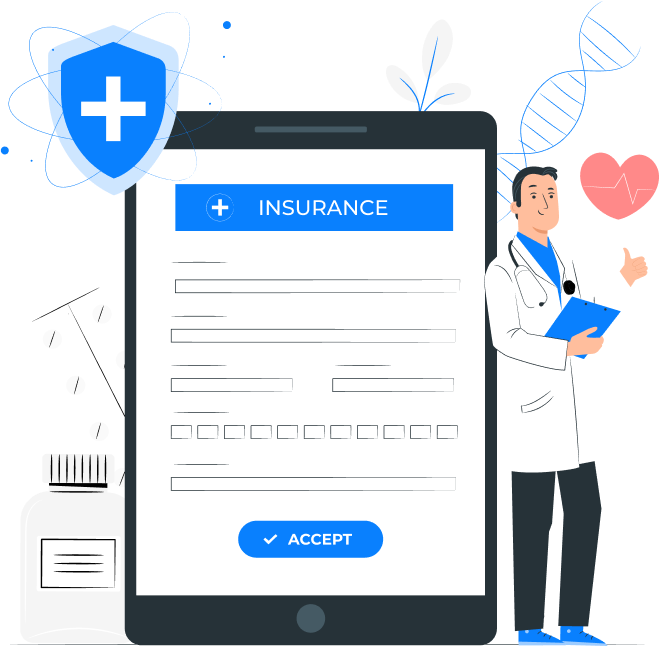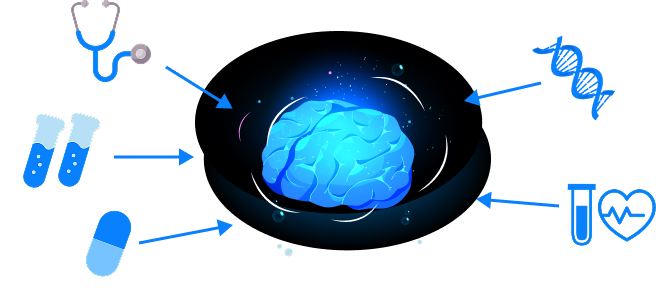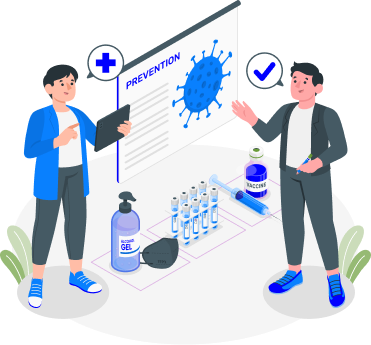What Is Clinical Documentation?


The Role of Clinical Documentation Improvement (CDI)
- Heavy administrative workload – that takes time away from patient care.
- Complex compliance and regulatory requirements – that demand precision.
- Accurate coding demands – to ensure proper reimbursement.
Even with EHRs streamlining some processes, clinicians often feel overwhelmed by documentation tasks, adding to burnout and reducing time for direct patient interaction.
Enhanced Accuracy and Completeness:
Real-Time Assistance:
Coding Support:

Audit Readiness:
Streamlined Workflows:
Improved Financial Performance:
Enhanced Patient Care:
Regulatory Compliance:
Improved Patient Satisfaction:
Adaptability Across Settings:

CARE-E enhances clinical documentation by equipping clinical care teams with the latest documentation technologies for greater accuracy and efficiency. CARE-E helps:
- Bridge the gap between clinical care and accurate coding.
- Reduce claim denials and the need for resubmissions.
- Support quality initiatives, including MACROs/MIPS and other Quality Measures Social Determinants of Health (SDOH) reporting.
With a comprehensive suite of capabilities, CARE-E enables providers to focus more on patient care while ensuring documentation meets regulatory and quality standards.

What is Clinical Decision Support ?
Clinical Decision Support (CDS) is a transformative health IT component designed to enhance clinical decision-making during patient encounters by delivering knowledge and person-specific information, intelligently filtered and presented at the right time within clinical workflows. By seamlessly integrating into electronic health record (EHR) systems, CDS tools empower clinicians, staff, and patients with actionable insights to improve diagnostic accuracy, treatment plans, and care coordination. These tools can provide alerts for potential drug interactions, recommend evidence-based guidelines, assist with diagnostic coding, and identify gaps in care, ensuring that decisions are informed by the latest clinical evidence and tailored to the patient’s unique health profile.
CDS encompasses a wide range of tools, including:
- Condition-specific order sets and clinical guidelines to support evidence-based care.
- Smart triage prompts based on real-time patient data.
- Concise patient data summaries and reports for better decision-making.
- Diagnostic support and relevant clinical references at the point of care.
- Automated alerts and reminders for clinicians and patients.
At CARE-E, we leverage AI and machine learning to elevate these tools, offering cutting-edge solutions that empower clinicians to make faster, smarter, and safer decisions.
How CARE-E Supports Smarter Clinical Decisions
Real-time alerts & notifications:
Evidence-based recommendations:
Comprehensive patient overviews:
Regulatory Compliance Support:
Leverage Tailored Decision Support
Improve diagnostic accuracy
Prevent medication errors
CARE-E’s clinical decision support tools improve clinical efficiency and decision-making by:
- Delivering real-time, data-driven insights to enhance patient care and reduce diagnostic errors.
- Providing evidence-based recommendations for more informed diagnoses, treatments, and medication management.
- Integrating proprietary or third-party clinically validated CDS solutions directly into workflows for customized decision support.
- Identifying gaps in care based on direct patient feedback to ensure more comprehensive treatment planning.

What is RPA?

How CARE-E Implements RPA
Why RPA for Healthcare?
Fast Implementation
Scalable & Adaptive
Increased Efficiency
Automating Repetitive Tasks
- Logging into systems and applications – Automates credential entry and system access to save time.
- Managing files and organizing folders – Streamlines document storage and retrieval.
- Extracting, copying, and inputting data – Reduces manual entry errors and speeds up workflows.
- Filling out forms automatically – Ensures accuracy and consistency in documentation.
- Connecting to APIs and updating databases – Enables seamless data exchange across platforms.
- Prior Authorization Processing – Submits and tracks authorization requests to reduce delays.
- Claims Processing & Billing – Automates claim suggestions and tracking to prevent denials.
- Patient Scheduling & Reminders – Manages appointments, confirmations, and follow-up reminders.
- Insurance Eligibility Verification – Validates patient insurance details in real time.
- Data Reconciliation & Reporting – Compiles and organizes data for financial, compliance, and operational reporting.
- Lab & Test Result Management – Extracts and updates lab results in EHRs for provider access.
- EHR Data Entry & Updates – Automates patient record updates to reduce documentation workload.
Real-World Applications and Use Cases
Patient Intake Management:
Medical Billing Coding
Appointment Scheduling:
Billing and Revenue Cycle Operations:
Regulatory Compliance Reporting:
Automated Marketing Campaigns:
Measurable Impact with RPA
Increased Efficiency
Higher Employee Satisfaction
Greater ROI
Seamless Communication Across Channels

Automating Patient Interactions
Scheduling
Assessments
Enrollments
Maximizing Patient Adherence and Participation
Personalization
Real-Time Insights
Consistent Follow-Up
Chronic Disease Management (Coming Soon)
- Challenge: Keeping patients with chronic conditions engaged in their care plans.
- Solution: CARE-E automates reminders for medication, routine check-ups, and lifestyle assessments, ensuring adherence to care plans.
- Outcome: Improved patient compliance and better long-term health outcomes.


Preventive Care Campaigns
- Challenge: Encouraging patients to participate in preventive screenings and vaccinations.
- Solution: CARE-E delivers personalized communication campaigns via preferred channels, promoting awareness and scheduling services efficiently.
- Outcome: Increased patient participation and earlier detection of potential health issues.
Post-Discharge Follow-Up
- Challenge: Reducing hospital readmissions by ensuring proper follow-up care.
- Solution: CARE-E sends automated follow-up instructions, monitors patient recovery progress, and schedules post-discharge appointments.
- Outcome: Reduced readmission rates and enhanced patient satisfaction.


Patient Satisfaction and Quality Metrics
- Challenge: Optimizing the collection of surveys and assessments beyond scheduled appointments to enhance compliance with the Medicare Access and CHIP Reauthorization Act (MACRA) and the Merit-based Incentive Payment System (MIPS), maximizing reimbursement and care quality.
- Solution: CARE-E automates outreach across the most accessible communication channel for the patient.
- Outcome: Providing a greater chance of data capture without the need for phone calls or subsequent visits, increasing quality metrics and ultimately additional revenue for providers.
Improved Patient Satisfaction
Streamlined Workflows
Higher Adherence Rates
Data-Driven Decisions


Unlock the Potential of Healthcare Data
Clear Patient Insights
Population Health Management
Predictive Intelligence
Custom Dashboards
Simplified Reporting
How CARE-E’s Analytics Platform Delivers Value
Improved Clinical Outcomes
Smarter Population Health Management
Greater Operational Efficiency
Simplified Regulatory Compliance
Chronic Disease Monitoring
- Use case: CARE-E identifies high-risk patients based on trends in their health data, enabling early interventions for conditions such as diabetes or heart disease.
- Outcome: Reduced complications and improved management of chronic illnesses.
Predicting Readmission Risks
- Use case: CARE-E’s predictive models highlight patients likely to be readmitted, providing actionable insights to optimize discharge planning and follow-up care.
- Outcome: Lower readmission rates and enhanced patient satisfaction.
Population Health Initiatives
- Use case: CARE-E analyzes demographic and clinical data to uncover social determinants of health and tailor community outreach programs.
- Outcome: Improved access to care and healthier patient populations.
Quality Improvement Programs
- Use case: CARE-E tracks metrics such as care delivery times, adherence to guidelines, and patient feedback to identify areas for improvement.
- Outcome: Enhanced care quality and streamlined clinical workflows.
Triage
- Use case: CARE-E documents patient reported data during live encounters and provides additional clinically proven triage questions to identify potential risks or unidentified conditions.
- Outcome: Identify new conditions and triage severity risk to patient having an emergent event.
Clinical Research Support
- Use case: CARE-E provides data aggregation and trend analysis to support research initiatives and clinical trials.
- Outcome: Faster data-driven discoveries and evidence-based care practices.
Empower Your Organization with CARE-E
A Trusted Partner in Healthcare





